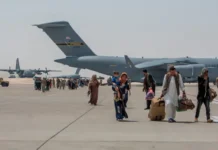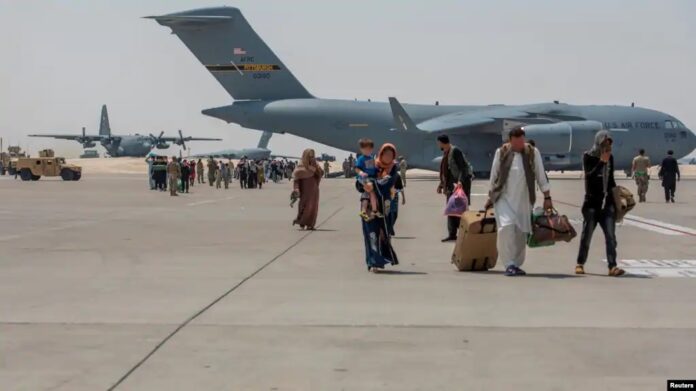The Australian government, under pressure from the people and refugee advocacy organizations, has finally decided to grant 16,500 new visas to Afghan nationals outside of its humanitarian program.
The federal budget bill, which was presented to parliament on Tuesday evening (March 29th), estimates that the cost of accepting these Afghan refugees is estimated at $ 665.9 million.
Here are some questions you may have about the Australian Government’s special visas for Afghan citizens.
Background
The Australian Government announced at the beginning of the fall of Kabul to the Taliban in August 2021 that it would provide 3,000 visas to Afghan refugees as part of its humanitarian program.
The government’s response was met with strong criticism from activists in the Afghan-Australian community and human rights groups.
In just a few months, the Australian Government received more than 32,500 asylum applications from Afghan citizens, including more than 145,000.
The Australian government then announced in January that it would grant at least 15,000 visas to Afghan citizens over the next four years through humanitarian and family programs.
But pro-refugee groups and activists from the Afghan-Australian community once again attacked the government’s announcement, calling it “misleading” and “playing with numbers”.
The main demand of these groups from the beginning was that the government allocate at least 20,000 visas outside the quota of the humanitarian program to the vulnerable citizens of Afghanistan.
The government of Scott Morrison reduced the annual quota for Australia’s humanitarian program from 18,750 to 13,750 in 2020.
However, due to restrictions imposed by the Corona epidemic, the government issued only 5,947 visas in fiscal year 2020 and 4,666 humanitarian visas by January of this fiscal year.
The federal government has also recently been criticized for discriminating between Afghan and Ukrainian refugees.
Total visas
The Morrison government has stated in its budget for the fiscal year 2012-2023 that in addition to the 15,000 visas previously promised in the form of humanitarian and family programs, it will issue another 16,500 visas to Afghan citizens at a separate cost.
“This is in addition to the 10,000 locations previously announced in the offshore humanitarian program,” an interior ministry spokesman told SBS.
“As a result, the total number of places available to Afghan nationals in humanitarian and migration programs over the next four years will be 31,500 (26,500 places under the humanitarian program and 5,000 places in the family migration program).”
With this in mind, Australia will grant a total of 6625 annual humanitarian (refugee) visas to Afghan citizens over the next four years.
Human rights organizations, including the Australian Refugee Council, have welcomed the government’s move.
How has the processing of applications progressed so far?
Between August 18 and December 15, 2021, none of the 3,000 special visas were issued to Afghan citizens, all of which were due to be issued by the end of this fiscal year.
More than 3,400 Class XB asylum seekers arrived in Australia between December 15, 2021 and February 28, 2022, the Home Office told SPS.
Also, between March 21, 2020 and December 14, 2021, only 1,766 asylum seekers arrived in Australia.
However, the ministry spokesman did not say when the visas were issued and whether all the newcomers were Afghan nationals.
The government says the humanitarian program is for offshore refugees displaced by harassment and human rights abuses, and does not allow them to return or settle in another country.
The program prioritizes vulnerable people who are identified as refugees by the United Nations High Commissioner for Refugees (UNHCR) and whose cases are sent back to Australia for resettlement.
According to the spokesman of the Ministry of Interior, the government has granted 1097 family visas to Afghan citizens by March 25 of the current fiscal year (2012-2022), 1034 of which were spouse or marriage visas.
“The government is in the process of granting approximately 1,500 family visas to Afghan citizens in the fiscal year 2012-21,” he said.
“The ministry continues to give priority to those Afghans who have applied for family visas,” he added.
“In the first quarter of the fiscal year 2012-22, the ministry formed a professional team to develop these (family) cases,” he added. “The work of this team has already reduced the number of older applications.”
Meanwhile, a number of Afghan citizens who have been living in Australia with permanent visas for many years are still waiting for their family visa applications to be processed.
A millennial refugee who has lived in Australia for about 11 years and suffers from a number of health problems filed a lawsuit against the government in early February in the Federal Court of Appeals for delaying his family’s visa application for four years.

























































